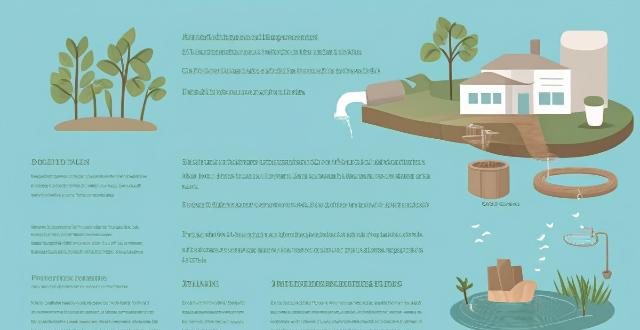The article discusses the importance of water resource management in our community and suggests various strategies to improve it. These include raising awareness through educational campaigns, implementing water-saving measures like fixing leaks and using low-flow fixtures, upgrading infrastructure such as wastewater treatment plants, promoting sustainable practices like xeriscaping and green roofs, and fostering collaborative efforts among different stakeholders. By adopting these approaches, we can ensure the long-term availability of clean water while protecting the environment.

Improving Water Resource Management in Our Community
Water is a precious resource that sustains life and supports various activities in our community. However, due to increasing population and industrial growth, water resources are facing challenges such as depletion, pollution, and unequal distribution. Therefore, it is crucial to improve water resource management in our community to ensure sustainable development and protect the environment. Here are some ways we can achieve this goal:
1. Raising Awareness
- Educational Campaigns: Conduct educational campaigns to raise awareness about the importance of water conservation and the impact of wastage on the environment. This can be done through schools, colleges, social media platforms, and local events.
- Public Service Announcements: Use public service announcements (PSAs) on television, radio, and online platforms to promote water conservation messages.
- Workshops and Seminars: Organize workshops and seminars for community members to learn about water-saving techniques and best practices.
2. Implementing Water-Saving Measures
- Fix Leaks: Encourage households and businesses to fix leaks promptly to prevent water wastage. Even a small dripping faucet can waste significant amounts of water over time.
- Low-Flow Fixtures: Promote the use of low-flow fixtures such as showerheads, faucets, and toilets to reduce water consumption without compromising performance.
- Rainwater Harvesting: Encourage the installation of rainwater harvesting systems to collect and store rainwater for non-potable uses like gardening, cleaning, and flushing toilets.
- Greywater Recycling: Implement greywater recycling systems to reuse treated wastewater from baths, sinks, and washing machines for irrigation and other purposes.
3. Improving Infrastructure
- Upgrade Water Systems: Invest in upgrading existing water systems to reduce leaks and improve efficiency. This includes repairing damaged pipes, replacing old infrastructure, and implementing smart metering systems.
- Wastewater Treatment Plants: Build or upgrade wastewater treatment plants to treat and recycle wastewater for reuse in industries, agriculture, and urban areas.
- Decentralized Water Systems: Develop decentralized water systems like package treatment plants and constructed wetlands to serve small communities or remote areas with limited access to centralized water supply systems.
4. Promoting Sustainable Practices
- Xeriscaping: Encourage xeriscaping, a landscaping method that reduces water usage by using drought-resistant plants and efficient irrigation systems.
- Permeable Pavements: Promote the use of permeable pavements like porous concrete or gravel to allow rainwater to infiltrate into the ground instead of running off into drains.
- Green Roofs: Advocate for green roofs, which absorb rainfall and reduce stormwater runoff while providing insulation benefits.
5. Collaborative Efforts
- Partnerships: Form partnerships between government agencies, NGOs, private companies, and community organizations to work together on water resource management projects.
- Community Participation: Encourage community participation in water resource management initiatives through volunteer programs, citizen science projects, and public consultations.
- Research and Development: Support research and development efforts focused on innovative solutions for water resource management, such as desalination technology, wastewater treatment advances, and alternative water sources like fog harvesting.
In conclusion, improving water resource management in our community requires a multifaceted approach involving awareness raising, implementation of water-saving measures, infrastructure improvements, promotion of sustainable practices, and collaborative efforts among various stakeholders. By adopting these strategies, we can ensure the long-term availability of clean water for future generations while protecting our environment.